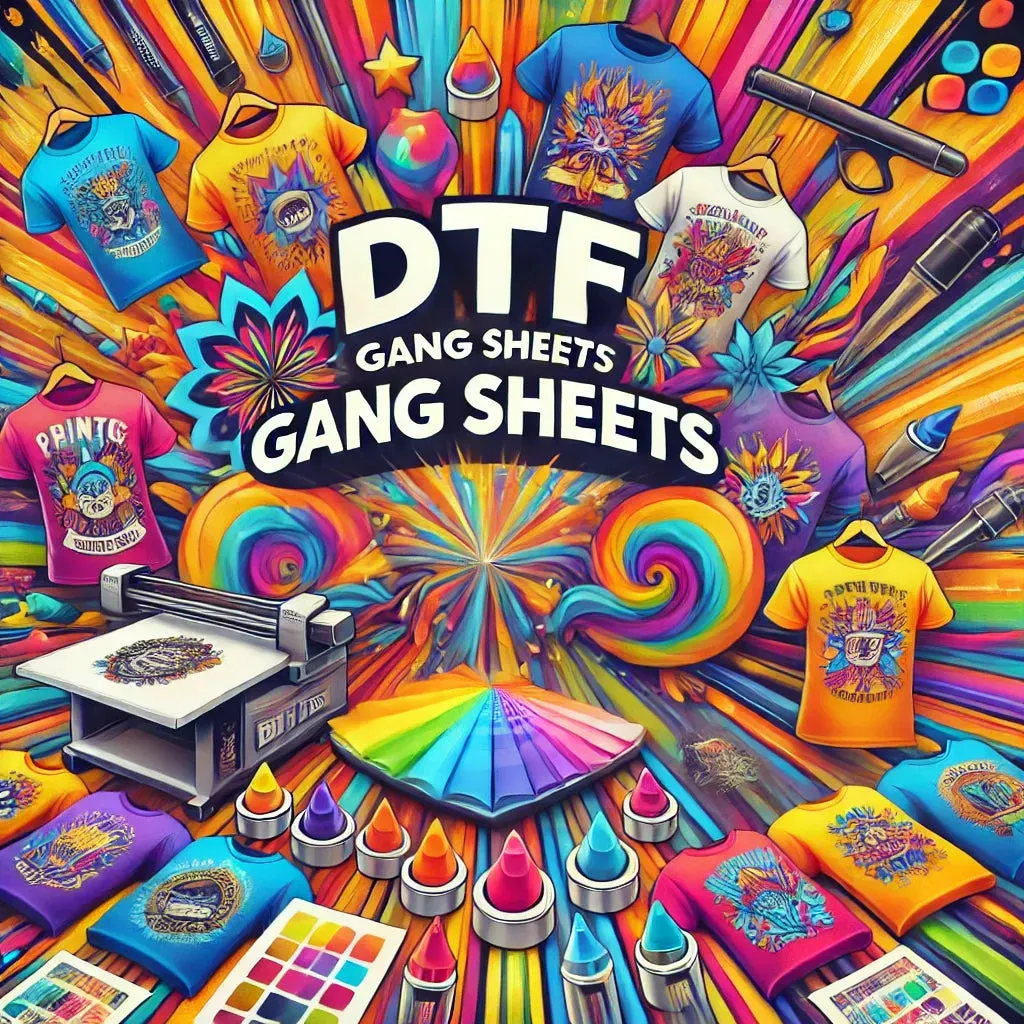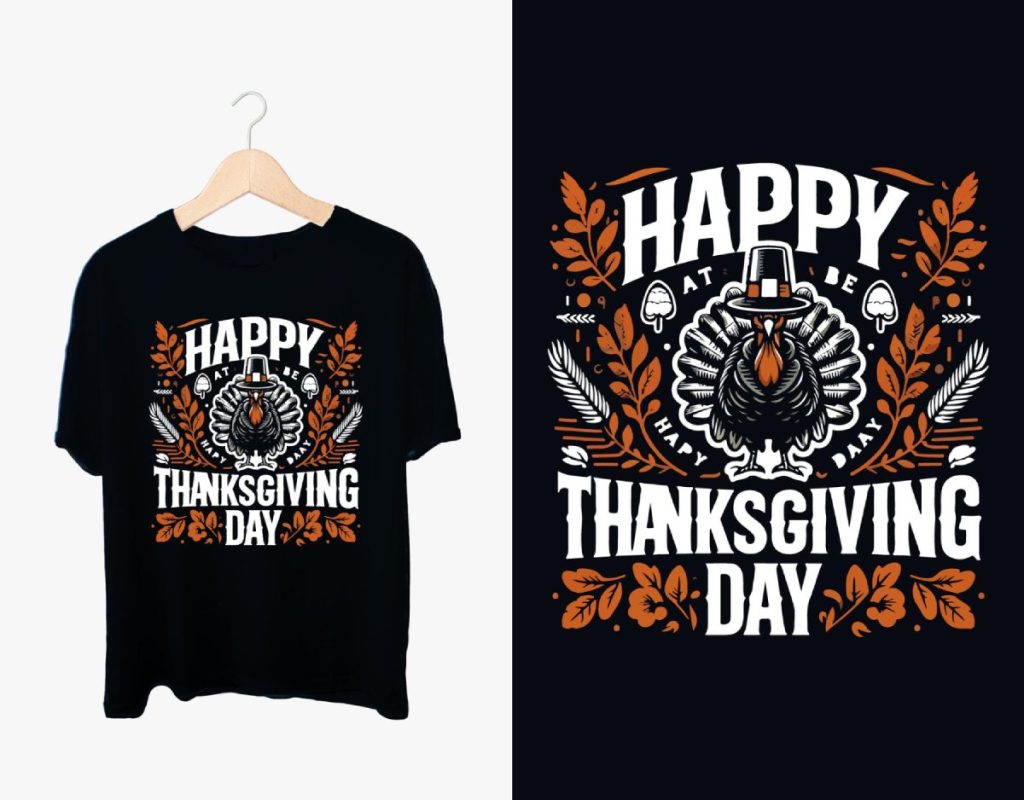DTF Gangsheet, short for Direct to Film gangsheet, is becoming an indispensable tool for custom printing enthusiasts and professionals alike. This innovative method allows you to consolidate multiple designs onto a single transfer film, optimizing material usage and streamlining the printing process. With DTF printing, you can achieve vibrant, high-quality prints that adhere well to various fabrics, making it easier than ever to create DTF prints on-demand. In this comprehensive guide, we will dive into a step-by-step tutorial that will teach you how to effectively use DTF adhesive powder and maximize your printing efficiency. Whether you are just starting or looking to refine your technique, understanding the art of DTF gangsheet creation is essential for anyone serious about garment decoration.
Exploring the world of Direct to Film printing unveils a host of unique opportunities for creating captivating designs. The term “DTF transfer” refers to the process of transferring high-resolution graphics onto clothing through specialized film, offering flexibility and durability in results. If you’re interested in bulk printing, learning about gangsheet preparation can significantly cut costs and enhance productivity. Using a DTF gangsheet tutorial, one can easily navigate through the intricacies of applying DTF powder adhesive and achieving stunning prints. This versatile approach to fabric decoration opens doors for creative expression while ensuring that material waste is minimized.
Understanding the Basics of DTF Printing
DTF printing, or Direct to Film printing, is a revolutionary method that allows for vibrant, high-quality prints where intricate designs can be transferred onto a variety of surfaces. Unlike traditional methods, DTF utilizes specialized inks and films, ensuring durability and a wide range of color options. This method is particularly advantageous for custom garment printing because it easily adheres to various textiles without compromising the fabric’s integrity.
By grasping the fundamentals of DTF printing, users can explore the methods of creating complex graphics suitable for any fabric type. The process leverages heat transfer techniques, which enable the ink to bond seamlessly with the material. This flexibility makes DTF an ideal choice for businesses looking to provide personalized apparel, as well as for hobbyists wishing to explore their creative designs.
Crafting Your First DTF Gangsheet: Supplies You’ll Need
To get started with DTF printing, having the right supplies is crucial for success. First and foremost, a reliable DTF printer that accommodates transfer films must be obtained, as this will be the backbone of your printing setup. Additionally, high-quality DTF transfer films and DTF powder adhesive are vital to ensure optimal adherence and beautiful prints on garments.
Moreover, investing in a heat press or curing oven will provide the necessary heat required to bond the designs to fabric effectively. Don’t forget the importance of graphic design software, which helps in designing your artwork precisely. Familiarity with your tools will lead to better print quality and more vivid designs, making these supplies invaluable for anyone starting their DTF journey.
Step-by-Step DTF Gangsheet Creation Process
Creating your first DTF gangsheet involves several detailed steps, starting with the design creation in your preferred graphic design software. It’s crucial to work with high-resolution images to achieve sharp details once printed. Ensure your canvases are appropriately sized and spaced to allow for easy cutting of individual designs later on.
Once the designs are finalized, the next step is to set up your DTF printer properly. This includes configuring print settings tailored for the DTF medium and regularly maintaining the printer to keep print quality high. Each step builds upon the previous one, making meticulous attention to detail essential for a successful outcome.
Applying DTF Powder Adhesive: Best Practices
After printing your gangsheet, the next critical phase involves applying the DTF powder adhesive. This process requires precision; while the ink is still wet, sprinkle an even layer of adhesive over your designs to ensure complete coverage. The goal is to have the powder adhere to the wet ink, facilitating better transfer during the heat application.
Post-application, it’s vital to shake off any excess powder to avoid clumping and ensure a smooth finish on the final product. Taking special care during this step will contribute significantly to the overall quality of your DTF prints, as any improperly adhered powder can lead to failures during the transfer stage.
Heat Curing: Ensuring Strong Bonding in DTF Transfers
The curing process is foundational to DTF printing, as it activates the adhesive powder and bonds it to the ink and fabric. Utilizing either a heat press or a curing oven, adhering to the recommended settings for temperature and timing based on the material is critical to achieving optimal results. This phase ensures the durability of the print and its longevity on garments.
Inconsistent curing can lead to poor transfers and decreased print quality, so monitoring the heating process is paramount. By understanding the importance of this step, you can maximize the effectiveness of your DTF gangsheet and create prints that withstand the test of time, enhancing customer satisfaction.
Final Touches: Cutting and Organizing Your DTF Designs
Once the transfer process is complete, cutting out the individual designs from your gangsheet is the next step. Use precision tools to ensure smooth and clean edges, especially if your designs are closely spaced. This will not only create a professional appearance but also facilitate the application of each design to various fabric types.
Moreover, keeping your workspace organized during this step can significantly streamline the entire printing process. Labeling your designs and having a system for storage can reduce confusion and errors, especially when working on larger projects or multiple designs simultaneously. Staying organized and prepared will lead to more efficient production.
Frequently Asked Questions
What is a DTF gangsheet and how does it work?
A DTF gangsheet is a method in DTF printing that compiles multiple designs on a single sheet of transfer film. This approach maximizes material usage and minimizes waste, making it especially beneficial for bulk printing. Each design is printed with DTF inks and then covered with DTF adhesive powder before transferring it to garments.
How do I create DTF prints using a gangsheet?
To create DTF prints using a gangsheet, start by designing your graphics in software like Adobe Illustrator. Arrange the designs on a large canvas, ensuring they are high-resolution and spaced properly. Print the gangsheet on DTF transfer film, apply DTF adhesive powder while the ink is wet, cure it using a heat press, and finally transfer the designs to your garments.
What supplies do I need for effective DTF gangsheet printing?
Essential supplies for DTF gangsheet printing include a DTF printer, DTF transfer film, DTF powder adhesive, a heat press or curing oven, graphic design software, and a computer. These tools are crucial for producing high-quality DTF prints and ensuring effective adhesion to fabrics.
Why should I use DTF adhesive powder in my gangsheet?
DTF adhesive powder is crucial as it helps bond the printed ink to the fabric during the transfer process. When applied while the ink is still wet, the adhesive powder ensures that the DTF print adheres well, resulting in vibrant and durable designs on various materials.
What are the benefits of using DTF gang sheets for printing multiple designs?
Using DTF gang sheets allows for efficient printing of multiple designs at once, saving both time and costs. This method reduces material waste and energy consumption, making it an eco-friendly and economical choice for businesses looking to produce high-quality custom apparel.
Are there specific heat settings I should use when curing DTF gangsheet prints?
Yes, curing temperature and time for DTF gangsheet prints vary depending on the DTF powder and transfer film used. Typically, it’s recommended to follow the manufacturer’s guidelines for heat settings. Generally, a temperature of around 160-180°C (320-356°F) for 10-20 seconds is a good starting point, but testing for best results is advisable.
| Key Points | Details |
|---|---|
| What is DTF Gangsheet? | A compilation of multiple designs on a single transfer film, optimizing materials and minimizing waste. |
| Benefits of DTF Gang Sheets | Saves time, reduces costs, provides excellent adhesion to various fabrics, and allows for bulk printing. |
| Essential Supplies | DTF Printer, DTF Transfer Film, DTF Powder Adhesive, Heat Press or Curing Oven, Graphic Design Software. |
| Step 1: Design Creation | Create high-resolution designs in CMYK mode. |
| Step 2: Prepare the Artwork | Flatten designs and arrange on a large canvas. |
| Step 3: Setup DTF Printer | Configure printer settings specifically for DTF film. |
| Step 4: Print the Gang Sheet | Load film and print, ensuring proper settings. |
| Step 5: Apply Powder Adhesive | Sprinkle adhesive on wet ink and remove excess. |
| Step 6: Cure Adhesive | Use heat to bond adhesive with the ink. |
| Step 7: Transfer Designs | Heat press the gangsheet onto the garment. |
| Step 8: Cutting and Finishing | Cut out individual designs for use. |
| Final Tips | Perform test prints, maintain equipment, organize workspace, and experiment. |
Summary
DTF Gangsheet is a crucial aspect of the DTF printing process, which can open up new avenues for creativity and efficiency in custom garment printing. By understanding the intricacies of creating a DTF gangsheet, you can streamline your production process, save on materials, and achieve stunning results with various fabric types. The steps outlined in this tutorial provide a comprehensive guide to help you through each phase, ensuring a successful outcome. As you delve into the world of DTF printing, remember to utilize the techniques and tips discussed to maximize your potential. Happy printing!



